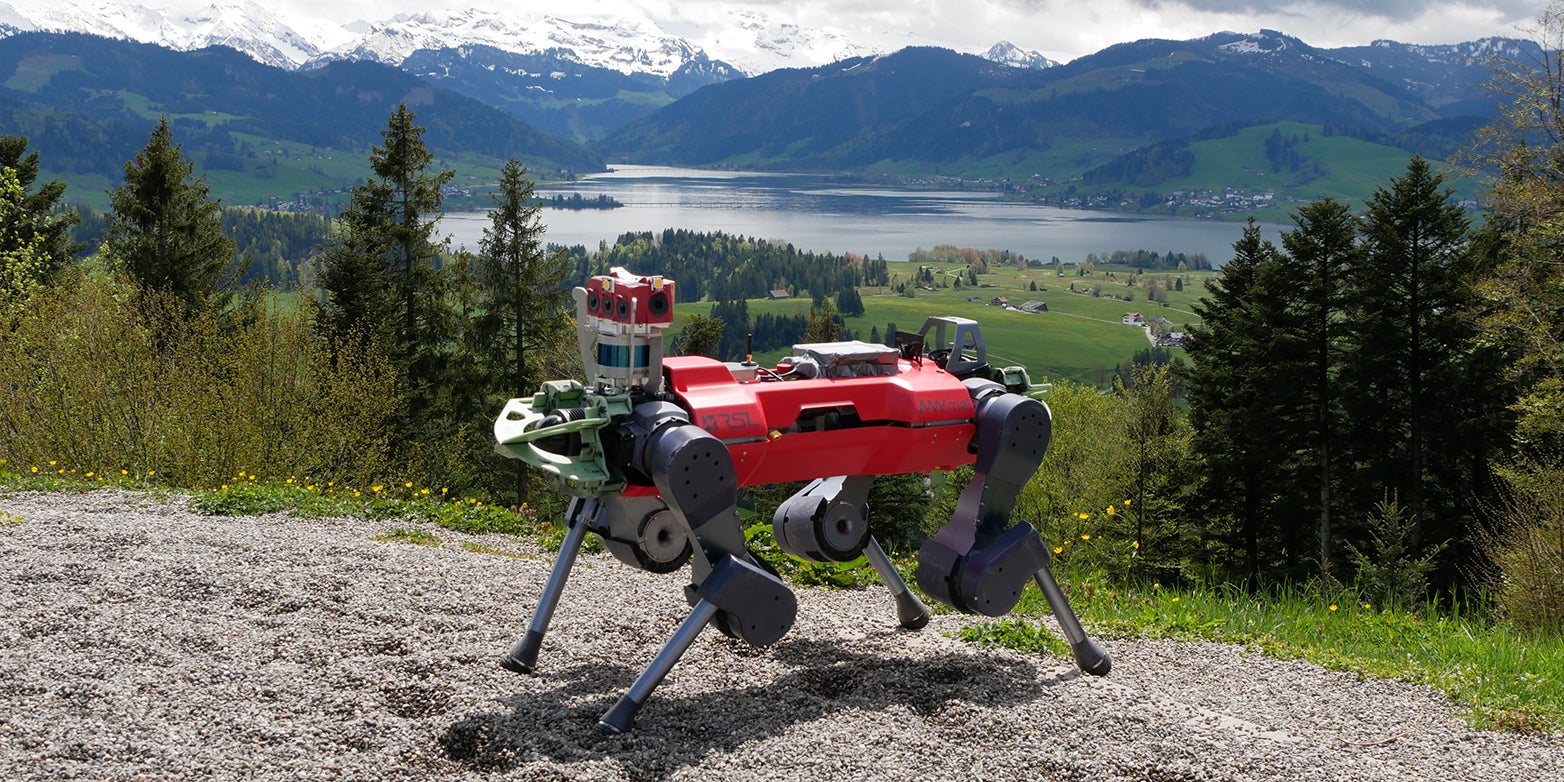Scientists develop four-legged robot that hikes difficult terrain faster than average human
Robot completes hour-long hike in Alps in duration recommended for human hikers

A new control technology has been developed by scientists for a four-legged robot that allowed it to achieve the “effortless” superhuman feat of hiking 120 vertical metres in the Alps in 31 minutes without any falls or missteps.
The advance may lead to the development of new robots and other kinds of robotic technology that can be used in terrain too dangerous for humans, said the researchers, including those from ETH Zurich in Switzerland.
The ANYmal quadrupedal robot successfully finished the hike – which consisted of steep sections on slippery ground, high steps and forest trails full of roots – four minutes faster than the estimated duration for human hikers, according to the study, published Wednesday in the journal Science Robotics.
“The robot has learned to combine visual perception of its environment with proprioception – its sense of touch – based on direct leg contact. This allows it to tackle rough terrain faster, more efficiently and, above all, more robustly,” study co-author Marco Hutter from ETH Zurich said in a statement.
While humans and other animals handle slippery or soft ground by combining the visual perception of their environment with the proprioception of their legs and hand, researchers said legged robots have been able to do this only to a “limited extent” until now.
They said this was mainly because information about the immediate environment recorded in such robots by laser sensors and cameras was often “incomplete and ambiguous”.
Citing an example of such ambiguous perception, researchers said tall grass, shallow puddles or snow appeared as “insurmountable obstacles” or were partially invisible for these robots, even when they could potentially traverse them.
In addition, they said depth perception could be poor in some cases due to difficult lighting, dust, fog, reflective or transparent surfaces or other factors.
While relying solely on proprioception can help in such cases for robots to physically feel out the terrain before adapting their gait accordingly, they said this could severely limit locomotion speed.
“That’s why robots like ANYmal have to be able to decide for themselves when to trust the visual perception of their environment and move forward briskly, and when it is better to proceed cautiously and with small steps. And that’s the big challenge,” Takahiro Miki, a doctoral student in Hutter’s group and lead author of the study, said.
Using a new control technology, researchers combined external and proprioceptive perception for the first time in ANYmal.
Prior to real-world tests, the robot underwent a virtual training camp in which the scientists exposed the system to numerous obstacles and sources of error.
These exercises, they said, trained the network to learn the ideal way for the robot to overcome obstacles, when it can rely on environmental data and when it would do better to ignore that data.
“With this training, the robot is able to master the most difficult natural terrain without having seen it before,” Dr Hutter said.
The training, researchers said, allowed the robot to learn to play it safe and rely on its proprioception if the sensor data on the immediate environment was ambiguous or vague.
This enabled the robot to combine the speed and efficiency of its external sensing and the safety of its proprioceptive sensing, according to the study.
The researchers believe robots like ANYmal can be used wherever it is too dangerous for humans and where other robots cannot cope with the difficult terrain such as during an earthquake, after a nuclear disaster, or during a forest fire.
Subscribe to Independent Premium to bookmark this article
Want to bookmark your favourite articles and stories to read or reference later? Start your Independent Premium subscription today.

Join our commenting forum
Join thought-provoking conversations, follow other Independent readers and see their replies